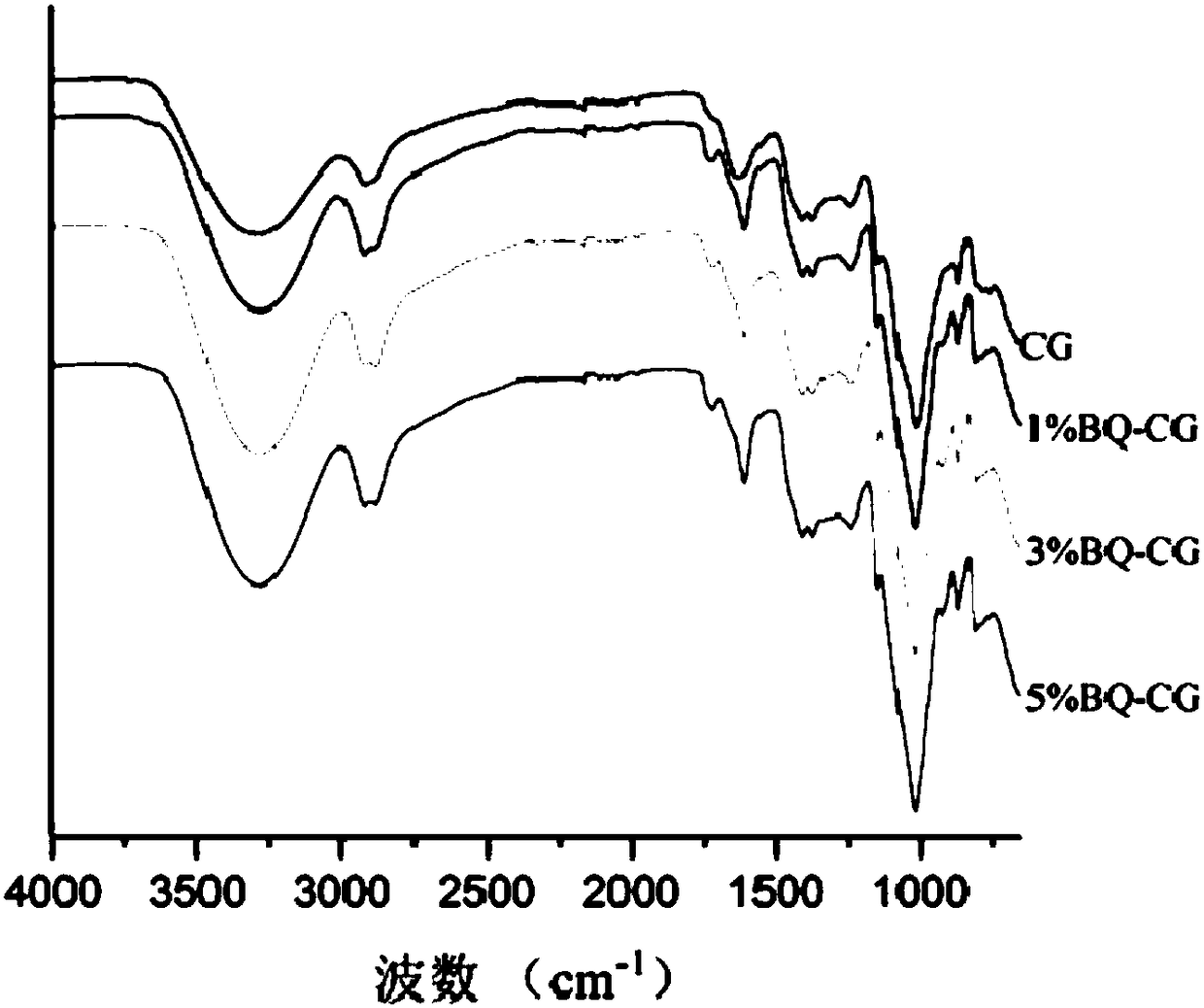Method for preparing fresh meat freshness diagnostic label material
A technology for labeling materials and freshness, applied in the direction of analyzing materials, analyzing materials by optical means, and analyzing materials by chemical reactions, etc. , the effect of protecting the interests of businesses, protecting legal rights and physical and mental health
- Summary
- Abstract
- Description
- Claims
- Application Information
AI Technical Summary
Problems solved by technology
Method used
Image
Examples
specific Embodiment approach 1
[0020] Embodiment 1: The preparation method of the raw meat freshness diagnosis label material of this embodiment is carried out according to the following steps:
[0021] 1. Quaternization of cellulose fibers:
[0022] a, after the rice straw pulp is pulverized and screened, the rice straw pulp cellulose fiber (RSP) powder is obtained;
[0023] b. soaking the rice straw pulp cellulose fiber powder with sodium hydroxide solution to obtain alkalized cellulose fiber;
[0024] c, weighing alkalized cellulose fiber, mass fraction is that 10%~12% sodium hydroxide solution, epichlorohydrin and volume fraction are the triethylamine ethanol solution of 35%~40%; , sodium hydroxide solution and epichlorohydrin with a mass fraction of 10% to 12% are added to the reactor, and the temperature is raised to 60 to 65°C and stirred for 6 to 8 hours. After the reaction is completed, the solid phase is filtered out, and the Wash with ethanol to remove unreacted epichlorohydrin; then add the wa...
specific Embodiment approach 2
[0027] Specific embodiment two: the difference between this embodiment and specific embodiment one is that in step one c, the dry weight of alkalized cellulose fibers and the mass fraction of 10% to 12% sodium hydroxide solution have a volume ratio of 1g: (20-30)mL, the ratio of the dry weight of alkalized cellulose fiber to the volume of epichlorohydrin is 1g: (8-10)mL, the dry weight and mass fraction of alkalized cellulose fiber are 10%-12 The volume ratio of the % sodium hydroxide solution is 1 g: (10-20) mL; the others are the same as in the second embodiment.
specific Embodiment approach 3
[0028] Embodiment 3: The difference between this embodiment and Embodiment 1 or 2 is that the concentration of the sodium hydroxide solution in c of Step 2 is 0.1-0.2 mol / L; the others are the same as Embodiment 1 or 2.
PUM
 Login to View More
Login to View More Abstract
Description
Claims
Application Information
 Login to View More
Login to View More - R&D
- Intellectual Property
- Life Sciences
- Materials
- Tech Scout
- Unparalleled Data Quality
- Higher Quality Content
- 60% Fewer Hallucinations
Browse by: Latest US Patents, China's latest patents, Technical Efficacy Thesaurus, Application Domain, Technology Topic, Popular Technical Reports.
© 2025 PatSnap. All rights reserved.Legal|Privacy policy|Modern Slavery Act Transparency Statement|Sitemap|About US| Contact US: help@patsnap.com



